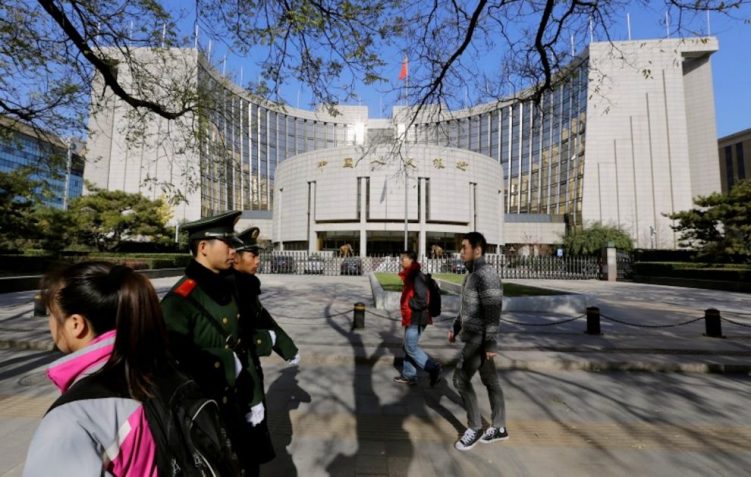China’s central bank said on Monday it will begin temporary bond repurchase deals or reverse repos to make open market operations more efficient. The aim is to ensure ample banking system liquidity.
Market participants and analysts believe the move paves the way for a new interest rate corridor, with the seven-day reverse repo rate serving as a central guide, giving the bank more leeway to manage cash conditions and interest rates amid hot demand for bonds.
That comes after the central bank’s governor said the seven-day rate “basically fulfils the function” as the main policy rate.
ALSO SEE: Chinese Pouring Money Into Bonds Despite PBOC Risk Warnings
The temporary repos and reverse repos will be loans with overnight tenors and will be conducted depending on market conditions.
The interest rates of the temporary and reverse repos will be 20 basis points below and 50 basis points above the seven-day reverse repurchase operations, or 1.6% and 2.3%, respectively.
“From now on, the People’s Bank of China (PBOC) will conduct temporary repos or temporary reverse repo operations depending on conditions,” the central bank said in an online statement.
PBOC can inject cash via reverse repos
Reverse repo operations should allow the central bank to inject cash into the banking system, whereas the repos could withdraw funds.
“If OMO repos were to be conducted, then the OMO repo rate could serve as the floor as this would be the rate the PBOC pays to absorb excess liquidity from the market,” Frances Cheung, a rates strategist at OCBC Bank, said.
“Being conducted regularly, daily OMOs can be effective in guiding market interest rates within a range,” she said.
PBOC Governor Pan Gongsheng said last month the seven-day reverse repo rate fulfilled the function as the main policy rate, noting the cost of monetary policy instruments with other tenors diminished their roles as policy rates.
“For market participants, this temporary repo or reverse repo rate is punitive in nature, and it is not ruled out that it will become a formal policy tool in the future,” Xing Zhaopeng, senior China strategist at ANZ, said.
Xing expects 1.6% to 2.3% could become the range of future interest rate corridor.
“The central bank’s move has added an intra-day liquidity management tool, which helps stabilise market liquidity,” Ming Ming, chief economist at CITIC Securities, said.
“The PBOC will not conduct overnight reverse repos too frequently, and may operate in the middle, end of the month, or end of the quarter.”
China’s 30-year government bond yield rose 2.5 basis points (bps) following the PBOC statement, while 10-year yields were up around two basis points.
“For market participants, the asymmetry of overnight lending and borrowing rates should be a warning to the market, with a clear intention to cool the (bond) market,” Zhou Shilei, director of global financial market department at UOB (China), said.
“Specifically, the central bank’s first temporary overnight open market operation is expected to be a repo, which may take place this week.”
The central bank said last week it has hundreds of billions of yuan worth of bonds at its disposal to borrow, and will sell them depending on market conditions, part of a plan markets see as an effort to cool a hot bond rally.
The central bank’s temporary overnight borrowing and lending operations will be performed in the afternoon of each working day based on market conditions, according to the PBOC statement, whereas routine daily operations are conducted in the morning.
- Reuters with additional editing by Jim Pollard
ALSO SEE:
China’s Central Bank Moves to Cool Bonds Market Trading
China Central Bank’s Bond Trading Goal Hit by ‘Asset Famine’
China Seen Freezing Lending Rate, Cutting Mortgage Benchmark
China Told it Must ‘Reinvent Itself’ to Turn Economy Around
China Bonds Bonanza Fuelled by ‘Asset Famine’, Property Woes
Indebted Provinces Seek Help From State Banks in Beijing – FT
























